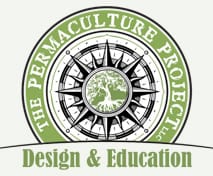In Permaculture we are working toward a comprehensive vision of our landbase. This means that we are not only focused on agriculture and gardening, but the built environment, energy, the so-called waste stream, etc. It is important to explore historical and native history in order to understand the way that folks before us have integrated themselves into the landscape. This portion of the Three Epochs outline delineates many possibilities to practice the basic art of shelter building from the perspective of the hunter gatherer reality: using local, available materials for construction and building according to the natural forces that surround us.
IV. Wind: Shelters
A. Identify the basics of body heat loss and production and how they affect one’s need for shelter in (look at human anatomy and physiology; physics, chemistry, biology)
a. Heat
b. Wet
c. Cold
d. Wind
B. Demonstrate proper dress, clothing selection and insulation for surviving in various extreme conditions (i.e. capote)
C. Make a set of primitive clothing, including:
a. Cape
b. Sandals
c. Goggles
d. Shirt
e. Buckskins (brain tanning)
f. Weaving
D. Discuss the basics of campsite selection including shelter, food storage, latrine, hazards, shelter orientation, ground cover, etc.
E. Participate in the construction of a natural niche or bivouac shelter (see building styles in epoch III)
a. Lean-to
b. Litter lodge (debris hut)
c. Tree pit
d. Niche
e. Bark/ snow kennel
f. Para/ tarp (demonstrate best knots for shelter rigging)
g. Snow trench/ kennel
h. Brush arbor/ enclosure
i. Brush/ bough beds
j. Mountain pod/ desert bivy hooch
k. Snow cave/ quinzhee
F. Spend at least one night in a hasty shelter using a minimum of modern conveniences (emergency means a twenty minute structure)
G. Construct a reusable bed or mat
a. Woven bark mat/ reed mat (phragmites)
b. Simple coal bed
c. Rabbit blanket
H. Participate in the construction or refurbishing of a permanent primitive shelter and stay in it
a. Pole wickiup
b. Hogan
c. Mortar house
d. A-frame
e. Wattle wall
f. Tipi
g. Igloo
h. Dome lodge
i. Dug-out
j. Grass/ cedar bark wickiup
k. Bark lodge
l. Earth lodge (kiva)
m. Mortar and daub walls
n. Tule mat lodge
o. Chimney draft bed
I. Identify the characteristics of frontal weather, clouds and prevailing weather patterns and micro-climates
J. Demonstrate weather prediction by using clouds, folklore, animal signs, wind speed and direction
K. Discuss the influence of wind chill and temperatures on survival comfort
L. Feng Shui, henges, sacred sites
